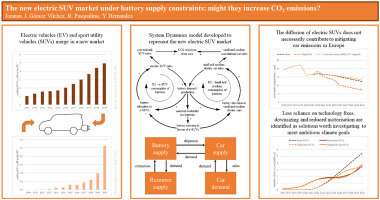the slate truck is a great concept. simple, low cost, pickup. like a ranger from the early 2000’s.
sucks that its a bezos project. wish they made cheap conversion kits instead of having to spend 10’s of thousands to upgrade an older vehicle to electric.
maybe some day. either way. i have a bike and a sedan that i barely use enough to justify insurance.
bring back kei trucks
The electric Humvee has entered the chat. It has over 200kWh worth of batteries, enough to make 3 more normal-sized EVs. And lord help you if one of those hits you.
This is true. I love my eBike. I highly suggest anyone buying a Specialized Turbo Levo.
Prefacing with, I want an e-bike.
As someone who commuted for a decade on a non e-bike. I’m legitimately wondering how we integrate them into existing infrastructure in the US. 50cc is the limit for gas engines before you need a motorcycle license, which at the high end is ~5HP. I’m seeing e-bikes with way more than 5HP being used on sidewalks. I don’t have an answer to the problem but it scares me to have such easy access to basically motorcycles that are classified as bicycles. I spent 2 decades sweating and learning to ride fast, now an inexperienced idiot can do 20+ mph when they have no business going that fast.
I do a hill ride that takes me a mile or two up a mountain and I easily catch 40mph when bombing down the mountain. But on regular bike paths, I can’t make the motor go faster than 19mph. Unless I am on a hill. It’s 100% peddle assist and has no throttle. As why it’s a level 1. I wanna throttled eBike next. Or I might just buy a motorcycle. Electric or gas.
Regardless how you power it, private automobiles will always be ineffecient and have a massive resource cost. The EV isn’t here to save the planet, it’s here to save the car industry. This is part of why we need the conversation to shift to energy efficiency instead of just emissions.
The EVs’ carbon footprint is marginally smaller, and even that tiny difference is highly dependant on drivers taking care of their cars and using them for many years. The only realistic advantage is that the pollution moves from cities to power plants. It’s a pretty nice improvement, but it does nothing to ‘save the planet’.
Another advantage is the entire gasoline distribution industry can go away. Tens (hundreds?) of thousands of gas stations in the US alone, with their tanks leaking hazardous chemicals into our groundwater. Trucks and storage facilities in every town. Pipelines and tankers. Middlemen at many layers. Gone.
This is also one of the key strikes against hydrogen. Do you really want to build out an entirely new distribution infrastructure just to keep all those polluters in business?
Some smaller gasoline cars actually beat out the total impact (production, use, disposal) of oversized electric trucks or SUVs
We can do both, but emissions should remain the priority. We can continue to scale energy generation while reducing emissions. We aren’t anywhere near extracting all the energy the sun provides, and solar, tidal, and wind power are all very low emissions even including manufacturing and decommissioning costs
That said, we do need public transit solutions that make raising 3 children in a loving household to be a life well-lived. Many SUVs are used because the house manager has to wrangle all the children while also picking up weekly supplies from one or more locations.
My limited experience with public transit is that it is a lot harder to do bulk purchases, keep groups together, or both.
My limited experience with public transit is that it is a lot harder to do bulk purchases, keep groups together, or both.
This is the real challenge. My approach has been biking to what I can and going single small and efficient car when it’s viable. It’s better than what a lot of people manage with kids, and marketing has convinced a lot of parents that they need a gigantic 3-row SUV that struggles to achieve 20mpg
Also never forget the tires. We’re breathing them.
And there are a lot of cases where we could just stop commuting…
But employers are increasingly ordering people back to work and even just the fear of it is measurably impact staff wellbeing.
The push for RTO put on full display how bullshit the push for EVs “for the environment” is. If .gov was actually serious about helping the environment, WFH would be encouraged when possible. It obviously isn’t feasible for many (probably most) jobs, but removing the vehicles that you can from the roads is still a step in the right direction.
Many (probably most) jobs are bullshit jobs just to make the economy roll.
If we skipped the middleman, and just fed everyone, we would cost environmental costs by 90%.
Exactly.
And ceramic brake dust! Yummy 😋
EVs have regenerative breaking, so in theory that should help with brake dust if people aren’t using their brakes as much.
In reality though, I doubt some people will make use of RB to actually see any benefits (unless it’s configured right in the car), plus tires are still a problem regardless of EV or ICE.
Pretty sure regenerative braking is on by default for every EV. It allows them to claim higher range/efficiency.
The difference is in how aggressively to configure it. More aggressively is more efficient but harder to drive smoothly.
Topping! 😁
Tires are a big issue right now. 6PPD-Q might be an extinction event for salmon.
Some studies have shown work from home may eliminate the commute miles, but those miles are replaced with leisure and errands miles. So ultimately we still need transit to replace a lot of car trips cause be it work, grocceries, or a night out, people need to get places.
If you live in a bicycle friendly place, a lot of car trips can be replaced.
Sure we need bike lanes too, but we still need transit as an option for longer distances/faster travel, for when the weather is awful, and for people unable to bike. You could even bring your bike on the transit, maybe visiting another city and bringing your bike with you on that transit.
We need to pull all strings. I didn’t say people don’t need to get places. I just stated there are many cases where it’s not required. Corona has shown what we could do if we wanted.
In wonder if, in terms of logistics, delivery of groceries and online shopping could be a good thing.
Of course not with instant-services like Flink. Of course not with single-use cardboard boxes and worker exploitation.
More like the good old milkman. People order their groceries, and they are delivered in reusable boxes next day, old boxes picked up. Same with online shopping.
Both is already a thing, but few do it. Maybe it would work much better if a huge percentage of people would do it, e. g. 15 % for grocery delivery. The grocery truck would not have to do more miles than if it would deliver to the current 1 % (guessed), just needs to be bigger and have more stops.
In communities that are not built to live car-less, that might save many individual car trips.
At my place there are two supermarkets within 500m, no need for any driving besides one lorry supplying the markets.
People will come up with any solution so long as it still relies on roads. The parent comment to this thread is all about tire dust and this solution just replaces private tire dust with commercial tire dust. The system you propose would still be more complicated, energy and resource intensive than people just taking transit to the groccery store.
The thing is, we don’t have transit. And I’m pretty sure demolishing our cities and rebuilding them in order to enable transit is even more harmful to the environment.
Only in the short term. In our current timeline we destroy our cities to pave new highways. By rebuilding our cities we can reduce sprawl, increase density and make the whole city more effecient while reducing the new land that gets developed.
Corona isn’t a perfect example as many places had restricted capacity and hours. There was also a significant precentage of the population minimizing their exposure to the outside world. Yes we should encourage work from home but my point is it won’t be reducing car use nearly as much as it seems and even if everyone worked from home we still need alternatives to driving.
It is just one example. I think you and I might misunderstand each other a lot.
Or how about this for a title: getting people to use smaller vehicles in general is the better environmental choice.
Not a perfect title, trains, trams and buses are larger than SUVs but far more effecient unless carrying just 1 passenger.
No, the above title is better, since it more accurately describes the article.
Transit may be more efficient, but that’s not in the article
The article is about the best use of batteries, not the best environmental choice.
People still think that electric car is a solution not a con to keep the plebs in traffic
Trains > busses and trams > Smaller EVs > Electric Boats > efficient gas vehicles > large EVs > innefficient gas and diesel vehicles incl boats> Airplanes
Walking and cycling should probably be right after buses and trams.
Right after? Depends on the scenario. For shorter trips like grocery shopping (depending on your area) it may not make very much sense to take a bus or tram.
Honestly it should first and we should be trying to maximize and prioritize active transport trips.
The issue with electrifying rail networks is that it’s very expensive and modern diesel-electric locomotives are already over a hundred times more efficient than trucks. So while it does reduce emissions to replace a diesel locomotive with a fully electric train you’re far better off getting hundreds of trucks off the road and adding one new diesel-electric locomotive!
The main issue with Diesel trains is that they tend to be in service for 50+ years. So while they might be decent today, that won’t hold true for very long. Sure, better than diesel trucks, but if there’s a EV truck revolution in 10 years, the Diesel train still has 40 more years to go.
Electric trains on the other hand have been very close to the theoretical limit of efficiency for decades now, and their total system efficiency keeps getting better the more renewable energy sources go online and coal and gas powerplants go offline.
An electric train keeps getting better and better, while a Diesel train does not.
Basically all diesel locomotives are actually diesel electric, where the deisel engine is just a giant generator which feeds the electric motors. It should be extremely easy to put on pantagraphs and have it run on electric power on electrified portions of the tracks while transitioning.
Heck imagine if they just electrified the mainlines and tracks running through city centers then powered up the diesel generator for going onto branch lines and sidings
Of course the biggest benefit of overhead wires is the insane amount of acceleration it enables, plus for big climbs the locomotives don’t have to pollute so much, and dynamic brakes (where the motors are reversed into generators and the energy is dumped into giant resister banks) could be adapted into regenerative brakes to dump energy onto the grid too
But suppose we eliminated 99% of all trucks on the road. Emissions from trucks would then be insignificant in the big picture.
Well that’s what diesel trains do for us. If we could reduce global emissions by 99% across the board we’d be done. Tearing the earth apart for an EV revolution just to eliminate that last 1% would not be worth it.
I would say that’s an efficient diesel vehicle which just sort of slots in with its vehicle type in the list above, but good points.
In Europe, short haul and long haul flights are more efficient than diesel vehicles actually. Short domestic flights are worse though.
Wow. That’s interesting.
If we need to prioritise like that, wouldn’t it be smart to put electric buses even higher than those other two forms of individual transport?
Only if those buses regularly carry less than 4 people.
You mean more instead of less?
Probably. I was trying to make a bus similar to a car.
I don’t follow
Empty buses that stop a lot are not good. Making them electric doesn’t improve the emissions that much.
-
E bikes have 3 grams of direct CO2 emissions per passenger kilometre
-
e-scooters have of 25 grams per passenger kilometre.
-
Long-distance buses generate around 31 grams of CO2 per passenger kilometre.
-
Electric buses have a CO2 footprint of 72 grams per passenger kilometre
-
Diesel buses have a CO2 value of 96 grams.
-
Cars have 166 grams of CO2 equivalents per passenger kilometre driven, (with an average occupancy rate of 1.4 persons per car)
I don’t really know how to understand the site in this context, since it says bicycles produce zero carbon emissions, so it can’t be taking vehicle production into account, and the topic at hand is resources required in production. And battery constituents at that, not carbon emissions.
Also: buses are empty when the service is shitty. It’s being proven every day that people choose the method of transport where the offer is good, be that car centric infrastructure, bike paths, or convenient public transport.
-
One thing that annoyed me with the actually good large bill before trump was the lack of incentives for e-bikes.
You mean IRA?
yup.
Yeah most policy makers completely ignoring or being outright hostile to e-bikes is really annoying.
I don’t even ride one since I live in a dense neighborhood and am physically able but for a lot of people they are pretty revolutionary.
I was never wild about them but I am aging and they are becoming a more tempting prospect. I sorta have a dream type where is a fixy and the pedal assist allows for like an automatic type of gear shifting and does regenerative braking. So like a lot of assist to get going from start and up a hill but falling to nothing when going along. I swear I had a gearhub that allowed coasting but also a coaster type break but Im like not sure if Im remembering it wrong.
A lot of ebikes will let you set a speed limit for the motor, so it only adds power below say 5mph. I don’t remember seeing any fixies, but there are some coming out with auto gear shifting






